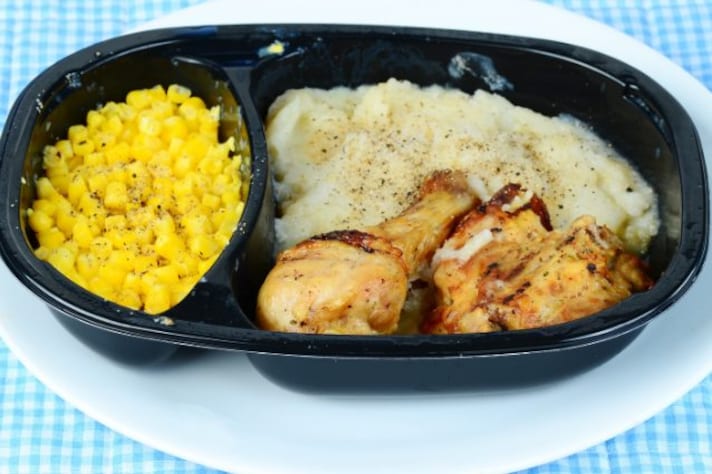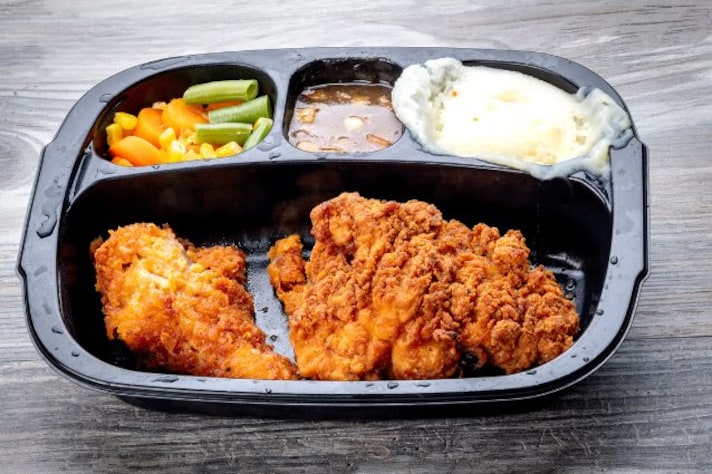What is a TV Dinner and Why Was It Invented?
A TV dinner refers to a pre-packaged, frozen meal designed for easy preparation, often eaten in front of the TV. The name originated in the 1950s when Swanson introduced these convenient meals, that immediately skyrocketed to popularity. While "TV dinner" is now less common, frozen meals still follow the same idea.

Eating in front of the TV is a beloved habit that dates back to the 1950s in American households. Families would gather around the screen, whether to catch the evening news, enjoy primetime dramas, or laugh along to the latest sitcoms, all while eating dinner. So, when someone says, “We’ll dine in front of the TV,” the image is quite clear: you, your plate, and the TV providing the entertainment. That’s a TV dinner, right? Well, yes… and no. The term actually refers to something even more iconic and uniquely American than just eating your meal in front of the television.
What Exactly Is a TV Dinner?
A TV dinner is much more than just the act of eating while watching television. The term originally refers to a pre-packaged, frozen meal that was designed for easy, no-fuss preparation—perfect for those nights when cooking from scratch felt like a tall order. These meals typically came in aluminum trays with separate compartments for each dish, usually containing some kind of meat, a vegetable side, and maybe a dessert, all frozen and ready to heat. The beauty of the TV dinner was that it fit seamlessly into the American lifestyle: fast, convenient, and practically made for an evening in front of the tube.
The idea was to provide a full meal without having to dirty up the kitchen or even think too much about what to eat. It’s like the culinary equivalent of your favorite pair of sweatpants—comforting, easy, and always there for you when you need it most.

Why Were They Called TV Dinners?
The name “TV dinner” wasn’t just a marketing gimmick—it was a product of the times. When these meals were first introduced in the 1950s, televisions were quickly becoming the centerpiece of the American living room. Swanson, the company that popularized the TV dinner, cleverly played into this growing cultural trend. The idea was that you could pop the meal into the oven and, while it heated, settle down in front of your television set.
The name stuck because it perfectly captured the convenience and lifestyle synergy of dinner and TV time. Today, though, you won’t often hear the term “TV dinner” as much as “frozen meal” or “microwave meal.” Still, for many, “TV dinner” evokes a sense of nostalgia, recalling the days when TV trays and prime-time shows went hand in hand.
Who Invented TV Dinners and What Was The First?
TV dinners as we know them were officially born in 1953, thanks to Swanson. The first offering? A Thanksgiving-style meal that included turkey, cornbread stuffing, peas, and sweet potatoes. Talk about a feast! It wasn’t just convenient—it was an experience. With packaging designed to mimic airplane food trays, this newfangled frozen meal offered the allure of modernity and ease. Plus, it was affordable, making it a hit with busy families and individuals alike.

The reception? America gobbled it up. TV dinners flew off the shelves, and by the 1960s, they had become a staple of American life. The height of their popularity came in the mid-20th century, with companies expanding their offerings to include different cuisines and options. From fried chicken to spaghetti, there was a TV dinner for every taste. Over time, improvements in freezing technology and variety helped the market grow, but the convenience factor always remained the key selling point.
TV Dinners vs. Frozen Meals: Are They the Same?
So, are TV dinners just frozen meals, or is there a difference? The truth is, TV dinners were the pioneers of the frozen meal movement. While today’s frozen meals have expanded far beyond the original concept, offering everything from gourmet dishes to healthier, organic options, they are still essentially the same in function: meals that are prepared, frozen, and reheated for easy consumption. However, TV dinners as a term specifically refers to those original pre-portioned meals that were often eaten in front of the television. Today’s frozen meals, on the other hand, come in all shapes, sizes, and packaging. So, while the TV dinner might not be the dominant form anymore, its legacy lives on in every frozen meal aisle.
;Resize,width=767;)
;Resize,width=712;)
;Resize,width=712;)
;Resize,width=712;)
